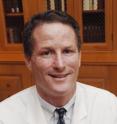Increased screening may better predict those at higher risk for heart disease, researchers report
Adding noninvasive imaging to current risk-assessment protocols may identify more people who are at risk of developing heart disease, UT Southwestern Medical Center researchers have found. Researchers used data from the UT Southwestern-led Dallas Heart Study to determine whether using computed tomography (CT) to scan patients’ hearts for calcium deposits and blockages could identify more people at high risk for heart disease and who could benefit from cholesterol-lowering therapy.
The recommendations by the Screening for Heart Attack Prevention and Education (SHAPE) task force are a proposed update to the current guidelines, were updated by the National Cholesterol Education Program Adult Treatment Panel III (NCEP-ATP III) in 2004.
In findings published in today’s edition of Archives of Internal Medicine, researchers found that the additional imaging proposed by the SHAPE task force did indeed increase the number of patients classified at “high risk.”
“We added imaging of coronary artery calcium, as recommended by the SHAPE task force, to determine if this strategy would augment current risk assessment,” said Dr. Jason Lindsey, an author of the paper and cardiology fellow at UT Southwestern.
The efficiency of calcium screening according to the SHAPE recommendations was determined by the number of people who had to be scanned before a single participant was reclassified as either meeting or not meeting individual cholesterol goals.
“In our sample of participants in the Dallas Heart Study, we found that by applying SHAPE recommendations compared with the current guidelines (NCEP-ATP III) there was a 27 percent relative increase in the proportion of patients who would need lipid-lowering therapy,” said Dr. James de Lemos, associate professor of internal medicine at UT Southwestern and the study’s senior author.
SHAPE calls for a broader application of atherosclerosis imaging than is currently recommended. Whether increased imaging of patients will be cost effective in the long term remains to be seen, Dr. de Lemos said.
“We can’t say what would happen in terms of clinical outcomes, but in terms of risk assessment we can provide a model of how these guidelines would impact treatment,” Dr. de Lemos said. “We found that for every seven people who had calcium imaging, one needed to readjust cholesterol goals to lower levels.”
Coronary calcium scans use computerized tomography (CT) to scan the heart and look for calcium deposits and blockages. The risk of coronary heart disease increases with higher calcium scores.
Calcium buildup can lead to atherosclerosis, a metabolic and inflammatory disease that causes plaque to accumulate in the arteries.
Dr. Scott Grundy, director of the Center for Human Nutrition at UT Southwestern and an author on the Archives paper, served as chairman of the NCEP panel which updated the guidelines for the clinical use of cholesterol-lowering medications to reduce the risk of cardiovascular disease.
Current NCEP guidelines identify three categories of risk based on a person's likelihood to develop cardiovascular disease (heart attack and stroke) in the near future: high risk, moderately high risk, and lower to moderate risk. High-risk individuals are those who have already had a heart attack; cardiac chest pain (angina); previous angioplasty or bypass surgery; obstructed blood vessels to the arms, legs or brain; diabetes; or a collection of other risk factors that raise the likelihood of having a heart attack in the next 10 years by more than 20 percent.
The proportion of participants identified as not meeting their cholesterol goals increased with age, with the greatest net increase among people ages 55 to 65 years old.
Source: UT Southwestern Medical Center
Articles on the same topic
- Many patients with heart disease have poor knowledge of heart attack symptomsMon, 26 May 2008, 21:07:35 UTC
